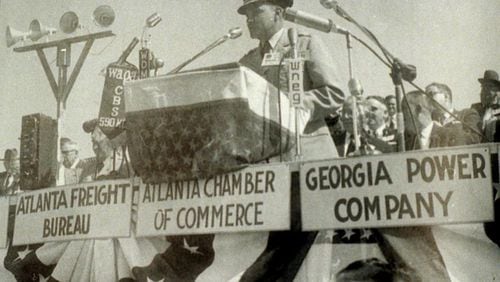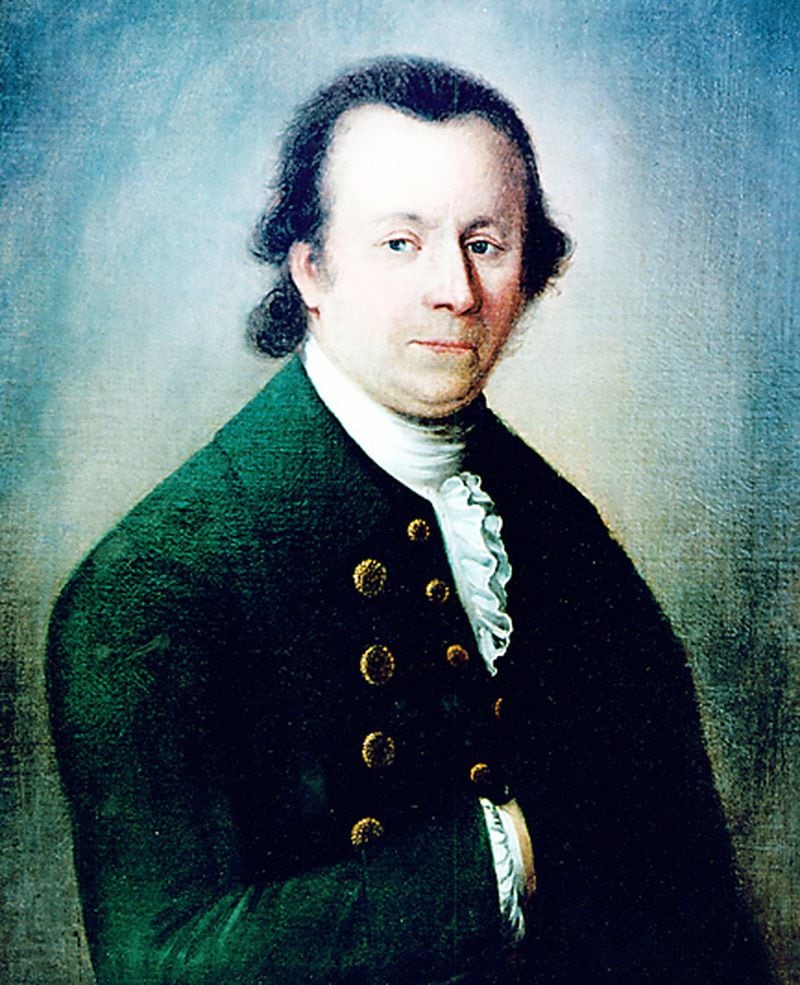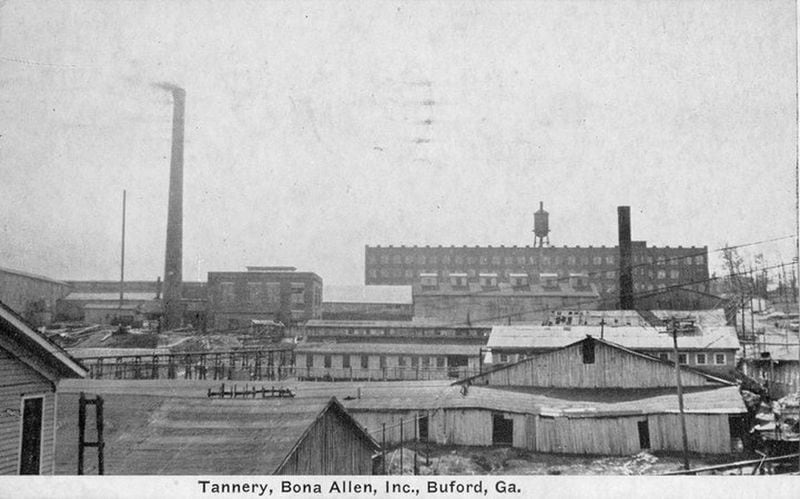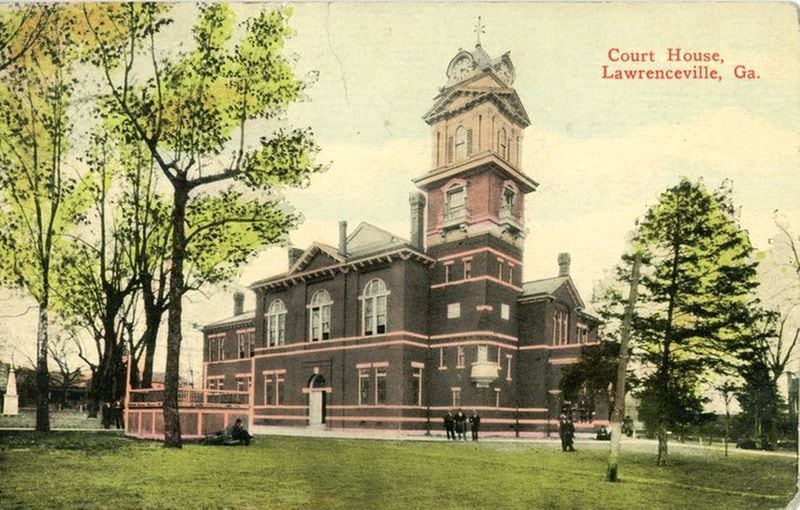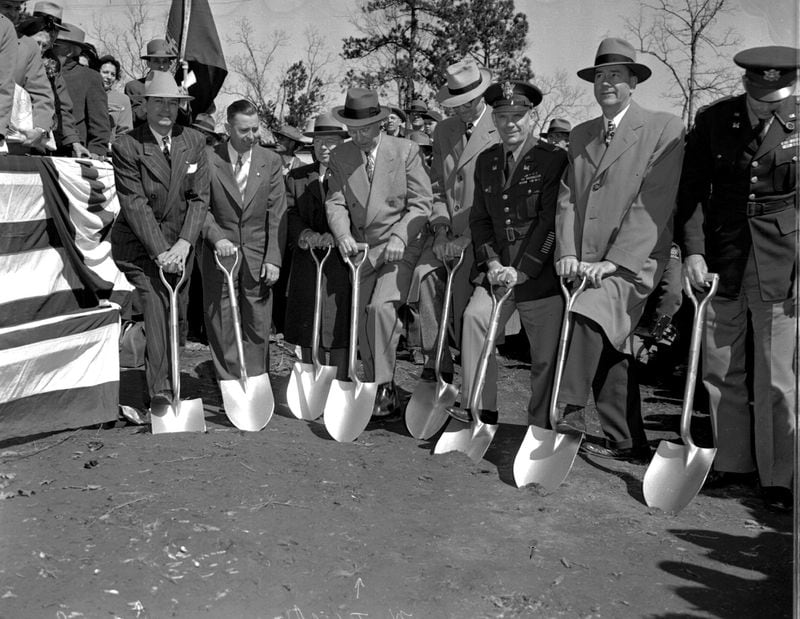On Dec. 15, 1818, Gwinnett County was born — and now it’s getting ready to party.
Georgia's second most populous county will kick off this month its yearlong bicenetennial celebration, a full 12 months of events and festivities leading up to its 200th birthday.
LEARN MORE: AJC FLASHBACK PHOTOS
“I just see it as a chance to bring the community together to celebrate a lot of different things,” said Gwinnett Commission Chairman Charlotte Nash, whose family has deep roots in the county. “Lots of different fun events are planned over that time period, and it’s also a chance for people to learn a little bit about the community that they call home now.”
With the latter in mind, The Atlanta Journal-Constitution offers the following (not remotely exhaustive) timeline of key events in Gwinnett County’s history.
1818: The state of Georgia steals the necessary chunks of land from neighboring Jackson County and the Creek and Cherokee Indian tribes to create the new county, which it decided to christen after one of three Georgians to sign the Declaration of Independence (despite Button Gwinnett having died four decades prior and having no real connection to the area).
1819: The home of Elisha Winn, who paid a whopping $200 for 250 acres in the center of the county, is chosen as Gwinnett's very first courthouse. Business for the county, an agragrian community of about 4,500 folks, is handled in a log cabin until a more permanent courthouse is built in 1824.
1861: Gwinnett sends three representatives to Georgia's secession convention in the then-capital of Milledgeville — and all three voted to stay in the Union, according to the Gwinnett Historical Society. The county would, nevertheless, raise 12 infantry companies, five cavalry companies and an artillery battery in support of the Confederate cause.
Gwinnett would eventually see a handful of Civil War “raids and skirmishes” but avoid major physical damage — excepting the burning down of the county’s first-ever cotton mill.
1868: Gwinnett's first major industry arrives in the form of R.H. Allen Tannery. R.H.'s brother, Bona, would soon purchase the business and wrap it into his own Buford-based tannery — which would employ nearly 10 percent of Gwinnett's population during the Great Depression years and become nationally known (making saddles and such for Hollywood stars like Roy Rogers).
1871: The first railroad line (a predecessor of present-day Norfolk Southern) is built through Gwinnett, creating a handful of new cities.
1871: A member of the Ku Klux Klan purportedly burns down the county courthouse in an attempt to destroy evidence of his bootlegging activities (they evidence was not in the courthouse).
The Gwinnett Historic Courthouse that still stands in downtown Lawrenceville would be built 14 years later and function as the county’s courthouse until 1988.
1911: In one of the highest profile lynchings in Georgia history, a black man name Charlie Hale is pulled from the local jail in the middle of the night and hung from a telegraph pole in downtown Lawrenceville.Hale had been accused of sexually assaulting a "prominent young [white] matron."
“No member of the mob was recognized,” The Atlanta Constitution reported at the time, “and no arrests have been made.”
1924: Gwinnett gets its first paved road: "the Lawrenceville-Decatur road," current day U.S. 29/Ga. 8.
1940: The census puts Gwinnett's population at 29,087.
1950: The federal government gives the go-ahead for the construction of the Buford Dam, a project that would stop up the Chattahoochee River near Gwinnett's northeasternmost border and create manmade Lake Lanier. The lake would bring recreation, a new water supply and hydroelectric power to the region and start ushering Gwinnett into the modern era.
1970: Cable manufacturer Western Electric opens a facility near present-day I-85 and Jimmy Carter Boulevard, creating about 2,500 jobs and helping trigger housing and construction booms that would make Gwinnett among the country's fastest-growing counties for the next several decades.
The construction of major water and sewer lines in the ’70s, and a flurry of road construction in the ’80s, help pave the way, too.
1980: The latest census puts Gwinnett's population at 166,903. That number would more than double over the next decade and approach 600,000 by the year 2000.
1984: Gwinnett Place Mall opens near Duluth, giving the county a crown jewel of a first mall and helping spark its central business district. The area would later decline, thanks in no small part to the 1999 opening of the Mall of Georgia in Buford.
1996: Gwinnett hosts a handful of events during Atlanta's Olympic Games, including tennis at the brand new Stone Mountain Tennis Center.
Over the subsequent two decades, Gwinnett County would continue to grow and diversify. It first became a majority-minority county — meaning it has more non-white residents than white ones — in 2010 and currently has more than 900,000 residents.
It's projected to eclipse 1 million people by 2020 and to become Georgia's most populous county by 2040.
Gwinnett County will begin a yearlong celebration of its bicentennial on Dec. 15, the 199th anniversary of its creation.
One of the first events will be held at 10:30 a.m. Dec. 16 at the Southeastern Railway Museum in Duluth, where the New Dawn Theater will debut their “reenactment of the story of Button Gwinnett.”
More events and information are listed at gwinnett200.com.
MYAJC.COM: REAL JOURNALISM. REAL LOCAL IMPACT.
The AJC's Tyler Estep keeps you updated on the latest happenings in Gwinnett County government and politics. You'll find more on myAJC.com, including these stories:
Never miss a minute of what's happening in Gwinnett politics. Subscribe to myAJC.com.
In other Gwinnett news:

